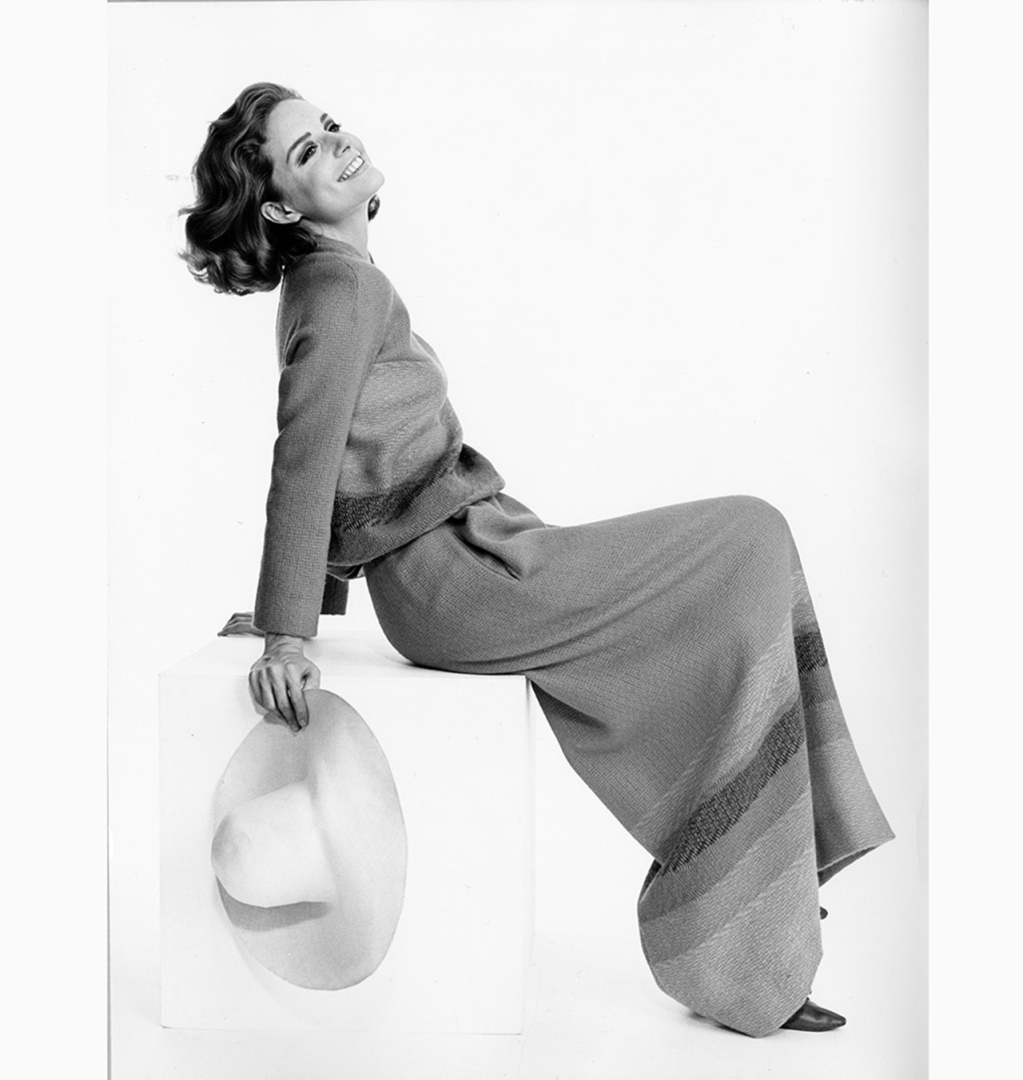There was a time when the small Sörmland village of Ripsa was one of Sweden’s most important fashion centers. There, on the Sandvik estate, lived Countess Ebba von Eckermann (1921–2018).
The exhibition presents around fifty garments from Ripsa — from the classic skirts to colorful coats and elegant evening wear — alongside a large selection of photographs from the company’s history, many taken by renowned photographers such as K.W. Gullers and Bo Appeltofft.
For several years during the 1950s and 1960s, the small village of Ripsa was among Sweden’s key fashion hubs, with sales reaching both the United States and Dior in Paris. The woman behind this success was Ebba von Eckermann, whose company at its peak accounted for ten percent of Sweden’s textile exports.
It all began in the late 1940s, when Ebba von Eckermann, on her Sandvik estate, had the idea to create local jobs by starting a home-based weaving industry in Ripsa. Ebba supplied the yarn and patterns, and in cottages throughout the village, women sat weaving. The fabrics were first made into plaids, then jackets and skirts, and eventually into entire clothing collections.
Ebba von Eckermann had a dream of making it in America.
She brought a few of her plaids, traveled there, and went from one major department store to another — and succeeded beyond expectations. It was in America that she achieved her greatest success, first through sales in department stores in New York and several other major cities, and later directly to private clients. In the spring of 1953, Ebba’s cousin presented one of her skirt patterns to Dior in Paris, and for a couple of years, the Dior Boutique produced and sold skirts made from Ripsa fabrics.
Ebba von Eckermann was educated in both agriculture and weaving. She designed most of the patterns for the fabrics herself, while hiring fashion designers to create the garments. Among those who worked with her over the years were the American Alice Topp-Lee, Danish Lars Hillingsø, and Swedish designers Gull Nyrén, Birgitta Nilsson, and Brita Alexandrow.
The Sandvik estate in Ripsa remained the heart of the operation throughout. The stable was converted into a weaving workshop that also housed a shop and café. Busloads of both Swedish and American tourists arrived, passing the now-legendary sign at the entrance.
Sörmland Museum holds an extensive collection of Ripsa garments. For this exhibition, additional pieces have been loaned from Stockholm University’s Department of Fashion Studies, the Design Archive in Nybro, and several private individuals — including Ebba’s relatives and friends. Together, they offer a broad overview of the entire production, from the late 1940s through the 1970s.
In conjunction with the exhibition, a richly illustrated book is also being released by the museum’s publishing house, designed by Carl-Johan Hane and written by Lotta Lewenhaupt, one of Sweden’s foremost fashion writers and a close friend of Ebba von Eckermann. In this personal account, Lewenhaupt tells the fascinating story of the Ripsa fashion phenomenon, capturing both its triumphs and struggles.
Ensemble and coat “Painted Village,” design by Lars Hillingsø, 1965.




